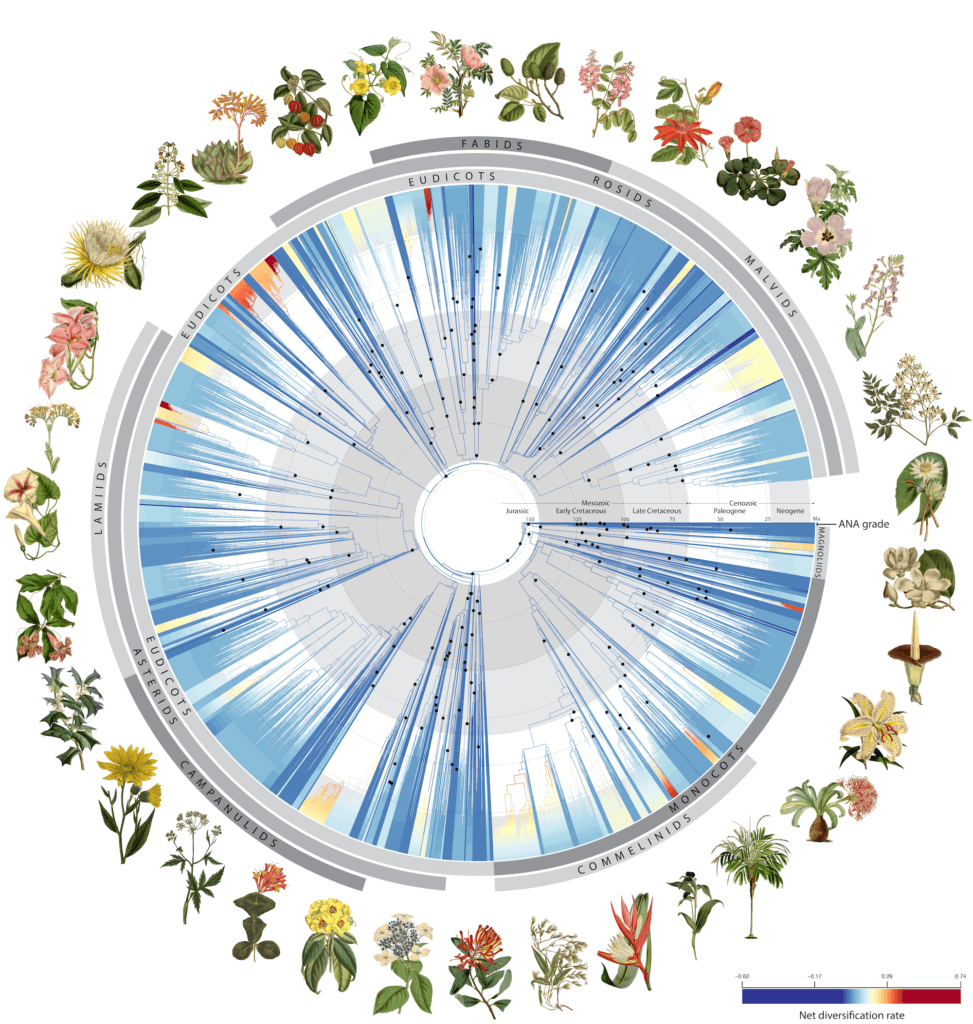ANN ARBOR, Mich. — If you’ve ever taken a walk through a forest, garden, or park and marveled at the incredible diversity of flowering plants around you, you’re not alone. Charles Darwin himself was baffled by the seemingly rapid emergence of these plants on Earth millions of years ago, referring to it as an “abominable mystery.” Well, after more than a century, an international team has finally cracked the code and decoded the DNA “tree of life” for flowering plants — an evolutionary roadmap that charts how these remarkably dominant species are all related.
In the groundbreaking study published in the journal Nature, nearly 300 scientists utilized cutting-edge DNA sequencing technology to analyze a staggering 1.8 billion letters of genetic code from over 9,500 species. This massive dataset covers approximately 60 percent of all known genera (the plural of genus, which sits above species in the biological classification system) of flowering plants.
What exactly is this ‘tree of life’ that scientists are referring to?
Think of it as a grand family tree for all living organisms on Earth, tracing their lineages and relationships to one another based on genetic mutations and divergences over evolutionary time. Just as you can trace humans’ evolutionary kinship with apes through genetic analysis, this new study mapped out the branching evolutionary paths that flowering plants traveled over millions of years as they diversified into tens of thousands of species.
“Flowering plants feed, clothe and greet us whenever we walk into the woods. The construction of a flowering plant tree of life has been a significant challenge and goal for the field of evolutionary biology for more than a century,” says Stephen Smith, an evolutionary biologist at the University of Michigan and co-author of the study, in a university release.
What makes this accomplishment so remarkable is the unprecedented scale and level of detail achieved. At nearly 10,000 species sampled, it dwarfs any previous attempts at mapping the flowering plant tree of life by over 15 times. The researchers also utilized advanced techniques to analyze DNA from herbarium specimens dating back to the 1800s, some collected by famous naturalists like Darwin himself.

By piecing together this genetic puzzle, the study revealed some fascinating insights into the evolutionary history of flowering plants:
First, it showed that these plants did indeed undergo an explosive burst of diversity shortly after their origin over 140 million years ago, arising rapidly to overtake other plant groups like the gymnosperms (conifers and cycads). This would have helped explain the apparent “abominable mystery” that so perplexed Darwin.
Second, this evolutionary radiation then slowed to a steadier pace for the next 100 million years before ramping up again about 40 million years ago. This second wave of diversification coincided with a global temperature drop, hinting that climate shifts may have played a role.
Beyond simply reconstructing this evolutionary history, the study opens up new frontiers for scientific discovery. By understanding the branching tree and relatedness of plant species, researchers can better predict the traits, disease vulnerabilities, potential medicinal compounds, and conservation needs of unstudied plants based on their closest relatives.
“The evolutionary relationships that are presented—and the data underlying them—will provide an important foundation for a lot of future studies,” says Tom Carruthers, the postdoctoral researcher at Michigan who co-led the analysis.
From identifying new species to refining taxonomies to developing AI models to hunt for medicinal plant compounds, the possibilities enabled by this work are vast. Perhaps most importantly, though, the team has made all of the underlying data freely available to scientists and the public through online portals.
The next time you admire the vibrant colors of a flower blossom or the lush growth of a forest canopy, you can appreciate the remarkable 140-million-year journey of evolution that gave rise to the staggering diversity we see today. Thanks to this landmark tree of life study, we finally have a clearer map of that grand journey.
Article reviewed by StudyFinds Editor Chris Melore.

